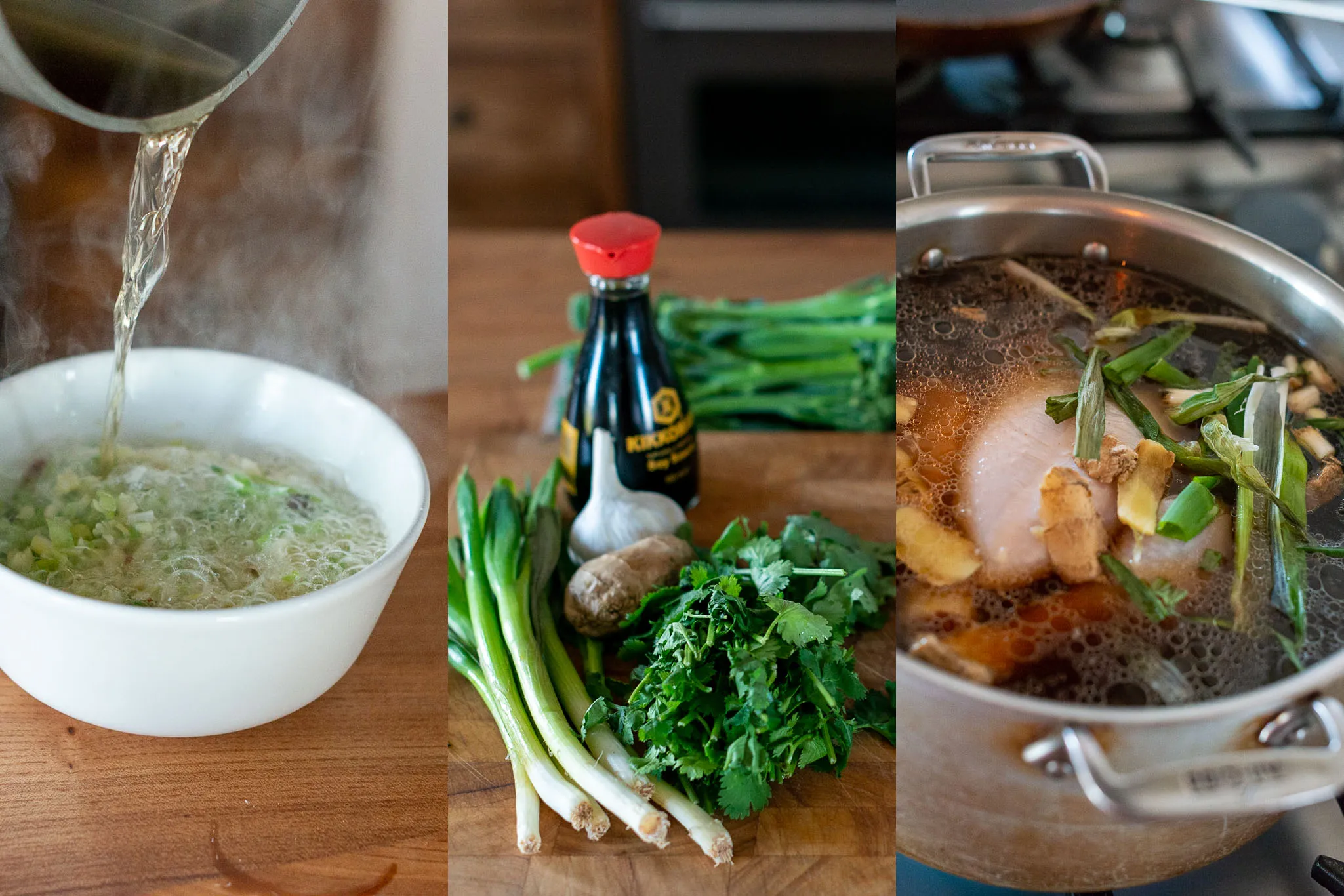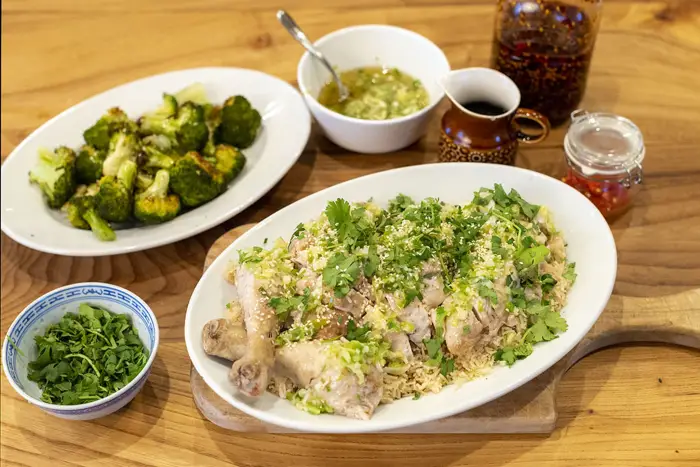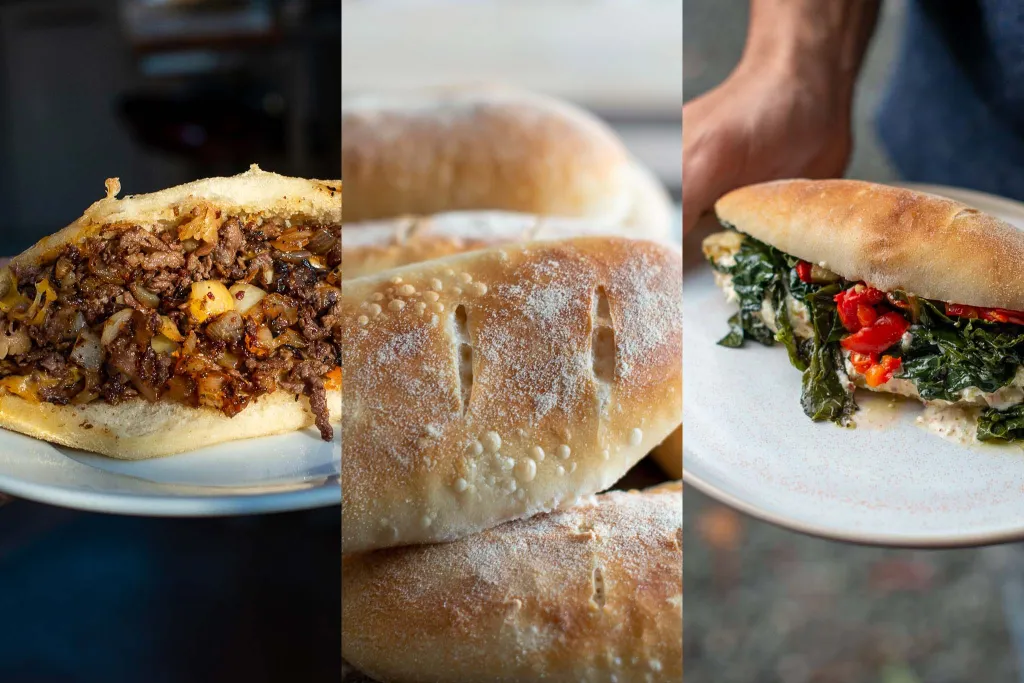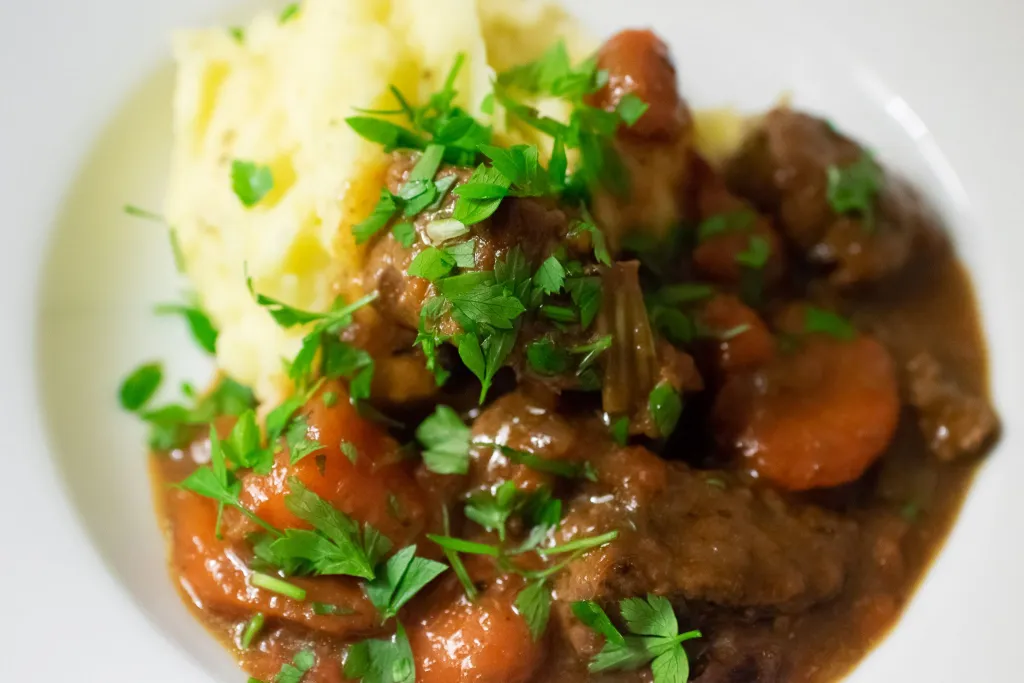Hainanese Chicken Rice

Hainanese Chicken Rice
We have been making this dish at Cow House since the very beginning. Frank loves food and cooking for people, but when the studios first opened, he didn’t have much expertise in preparing dishes from the Asian continent. His background is Italian American, and he spent some time in New Mexico and Califonia, so he was more used to cuisines from Western Europe and Central America. It’s always nice to get feedback, and one thing we learned from our first few summers of Art on the Farm was that our students were craving Asian food. Upon initial research, it seemed like a daunting task. So many Asian dishes seemed to require special ingredients not easily sourced in rural Ireland, and others required a wok and a much more powerful burner than we have available in our kitchen. The saviors in those early years were a variety of curries and this particular dish, Hainanese Chicken Rice.
Frank first came across this dish in a Mark Bittman videohe found in the New York Times back in 2008. It seemed simple enough and the ingredients are sold in every grocery store. It was an immediate hit and the real affirmation came a few years later when we had a student during our summer program originally from Singapore sit down to dinner one night and exclaimed, “oh, you made Hainanese Chicken Rice!” From that point onwards we knew we had something closely resembling the original. Caitriona now makes a whole host of Asian food. After trips to both Hong Kong and Thailand as well as lessons from some of our former students, she’s been making all sorts of dumplings, curries, and other delicious meals. We don’t follow the Mark Bittman recipe as closely these days. We’ve veered more towards a simplified version of this method by Adam Liaw. It remains a favorite and we’re happy to share it.
A few notes to consider as you make this dish for the first time. This recipe yields extra stock. We used to just toss it down the drain, but please don’t do that! If you let it cool and put it in the freezer, use it the next time you make the dish. Saving the stock has two benefits. Firstly, cooking the chicken in the rich broth as opposed to water yields an incredible depth of flavor. There is abundant umami, especially in the skin. It’s something that is often replicated with msg, but this way, achieved more naturally. The second benefit is significantly shortening your meal prep time. Usually, you need to wait until the chicken is done to start the rice, but if you save the stock, you can cook the rice while you’re cooking the chicken. You can save as much as thirty minutes by doing this. One last note, from the beginning, we used long-grain rice but have done some experiments with sort grain rice more recently, and it’s equally delicious, so use whatever you prefer.

Hainanese Chicken Rice: Ingredients
1 medium chicken
75g Spring onions (finely diced, saving ends for the stock)
75g Ginger (finely diced, keeping outer layer for the stock)
25g Garlic (finely diced)
120ml soy sauce
1 bunch of fresh coriander (roughly chopped)
110ml Sunflower oil
3 tbsp toasted sesame seed oil
320g of your preferred rice
Method:
Place the whole chicken in a pot and cover with water along with the ends of the spring onions, ginger peelings, and 40 ml of soy sauce. If you have stock from a previous time, you’ve made the dish, defrost it in advance, and use it instead, adding extra water if necessary to cover the chicken. Make sure you reserve 300 ml of the chicken stock for your rice! (600 ml if cooking it in a pot instead of a rice cooker)
Bring the pot to a boil, then lower to a gentle simmer for approx 30-35 mins. The chicken needs to reach a temp of 75ºC. Remove the chicken from the pot, rub the skin with 1 tbsp of toasted sesame oil, and set aside. When the chicken is ready to be cut, carefully preserving the skin, remove the breast meat, and the legs and wings.
While the chicken is cooling, prepare the spring onion and ginger oil. Finely dice the spring onions, ginger, and garlic and place them all into a metal, ceramic or pyrex bowl. In a small saucepan, heat the sunflower oil and 2tbsp of toasted sesame oil, over a medium to high heat until the oil is hot. The oil will get extremely hot and should just reach its smoke point. Carefully pour the oil over the spring onion mixture and set aside.
To cook the rice, if making this dish for the first time, you will use the stock that the chicken was cooked in. If you have reserved stock, you can cook the rice while the chicken is cooking. Rinse the rice 3 or 4 times until the water becomes clear. Place the rinsed rice in your rice cooker along with 300ml of the chicken stock and cook as you normally cook rice. If using a pot on the stovetop, bring the rinsed rice and 600 ml of stock to a boil. Immediately reduce the heat to a very low simmer and cover with a lid. Cook for twenty minutes.
For serving, place the rice on a serving plate with the carved chicken on top. Spoon half of the spring onion and ginger oil mixture over the chicken along with half of the coriander. Just before serving ladle 160ml of the hot chicken stock into a small serving bowl with 80ml of soy sauce. This is a simple sauce to accompany the dish. You’ll also be serving the remaining ginger and spring onion oil and coriander at the table. Lastly, we highly recommend serving this dish with our fermented hot sauce and our peanut rayu. They go great with the meal!






